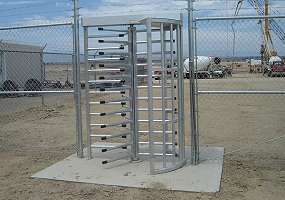
A turnstile is a form of gate that allows one person to pass at a time and in one direction only, controlling access based on the insertion of a coin or coins or on the usage of special cards or bar codes. Turnstiles are most commonly used in heavy traffic areas and in areas where people stand in a line, such as at the entrance to stadiums, public transport stations, museums, public toilets, public offices or beaches and they are considered to be the most efficient tools for controlling access. Here are the benefits of turnstiles:
- Improved security – turnstiles are often used as first control points for restricted entry facilities. The solution provides complete protection – everyone intending to pass through the turnstile needs to carry either the required entry card or, if entry is authorized based on tickets, the person who wants to pass through needs to prove the purchase of a ticket, otherwise the turnstile just won’t open;
- Flexibility – turnstile systems can accommodate a wide range of credential readers, from card readers and fingerprint readers to retina scanners, reducing the workloads of the security personnel and increasing security in sensitive facilities. Many systems can also be programmed to allow access to particular people only during specific periods of the day and the data related to the entries and exits can be transferred to HR departments, thus it becomes easier for the HR department to track work hours.




